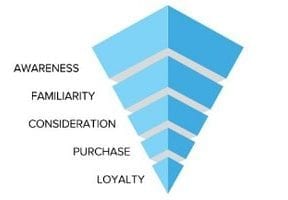What a year 2017 was for social advertising and tracking. What stayed the same, what’s new, and what is on the horizon? Let’s get into it.
What Stayed the Same
UTM links are still crucial to understanding ad performance. We may never move beyond UTM tags, or any query parameter tracking for that matter. The reason is simple. No one company owns every component of the digital stack well enough to rely solely on it. Furthermore, no ad campaign is within a single medium or site, most of the time.
Google may own search ads and analytics, but it lacks a delivery vehicle like Facebook. Facebook may offer a strong ad product, but its analytics, search, and off-Facebook ads are still evolving. I wish there were a way to auto-generate UTM parameters for ads, platform, mediums, and devices. For now, the best way is still manually tracking it.
I wish there were a way to auto-generate UTM parameters for ads, platform, mediums, and devices. For now, the best way is still manually tracking it.
Lookalike audiences are invaluable tools on Facebook. A lot of businesses are still not using lookalike audiences because they don’t think they have enough data, or because they don’t know how to set them up. If you don’t have enough purchases in seven days, expand the window. Try 30 days, 60 days, or even 90 days. Add-to-carts also work well. Otherwise, try signups or website visitors. Think about lookalikes as a cascading funnel. You to build them out by driving traffic to the specific action. So be patient. A better audience will come in time.
Product feed ads are invaluable, too. I am amazed at how invaluable product feeds are to my ad campaigns, and not just for remarketing. Product feed ads have repeatedly proven that they work well as prospecting units, performing at a fantastic cost-per-acquisition, and often better than traditional prospecting heavyweights, such as link or video ads.
While each case is different, it’s worth a try for your business. If you’re on a hosted ecommerce platform, or if your products don’t change that often, it’s easy to create and connect a feed — the effort is minimal given the return. Add this to your must-try for 2018.
What’s New
The ability to view all of your competitors’ ads on Facebook. This one is shocking. Facebook’s intention is to let users view all ads on a page so they can know if a post is an ad or organic. The potential for advertisers is huge. You can now see all the ads your competitors are running, or become inspired by the ads of brands you admire. This cures writers’ block, ups the competition, and is possibly the best ad improvement in a long time. This feature will roll out entirely by the end of 2018.
Twitter is becoming safer. Twitter has finally started to take a tougher stance on hate speech and aggressive behavior. I run many Twitter campaigns outside of lookalike and re-marketing. Still, it’s reassuring that Twitter is putting the right step forward to ensure my brand’s content won’t appear next to something that goes against my brand’s standards. (I’m looking at you, YouTube). The open question remains, however: What, exactly, is Twitter? That question could be confronted this year, as Twitter increasingly answers to Wall Street.
…it’s reassuring that Twitter is putting the right step forward to ensure my brand’s content won’t appear next to something that goes against my brand’s standards.
Pinterest capabilities are coming, slowly. It’s becoming easier for smaller brands to advertise on Pinterest. The features are still lightweight. Don’t expect to scale your brand’s spend here, yet. But with a greater emphasis on the pixel, as well as more targeting and delivery options, Pinterest is shaping up to be a valuable tool for brands that rely heavily on Pinterest organically, or visual content in general. Expect big things from Pinterest this year and in 2019.
What’s on the Horizon
More on-platform insights. While I opened the “what stayed the same” section with the observation that no one digital company is doing everything well enough to own the market, it’s not for lack of trying. Look at Facebook — specifically, the ads manager. There’s now a comprehensive web analytics solution for your site, all using the pixel. This feature didn’t come with much fanfare. And Facebook is still working out the bugs. But it is a step in the direction of giving deeper insight into which ads perform, and why.
Simplified tracking. Notwithstanding the dominance of UTM links, better and easier tracking is coming. So is automated tracking. The rise of tracking templates and a greater use of ad-friendly variables are allowing marketers to create plug-and-play equations that automatically fill in the necessary information. Unfortunately, these are still platform-specific. But as more advertisers need to prove the return-on-investment of their ads, simplified and automatic tracking will become a must-have.
More mobile products. We live in a mobile world. The era of releasing on desktop first is over. Increasingly, Facebook’s ad products work only on mobile. Instagram is a mobile product that was brought to the desktop. The same will be true for other ad products that are launched, if they do well on mobile, they’ll come to the desktop. If your company isn’t mobile-optimized, it needs to get there.
We live in a mobile world. The era of releasing on desktop first is over.
A Good State
In short, the state of social advertising and tracking is good, overall. Going forward, stick to best practices, experiment frequently, and be mobile. Not every business has the ability to vet every new ad feature or product. And that’s okay. Don’t fret.
Speaking of fretting, I’m worried I missed something. Would you change this list? Let me know in the comments.




